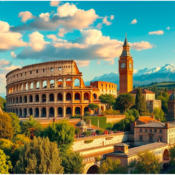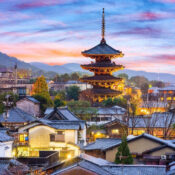14 Best Amazing Places to Explore in Varanasi
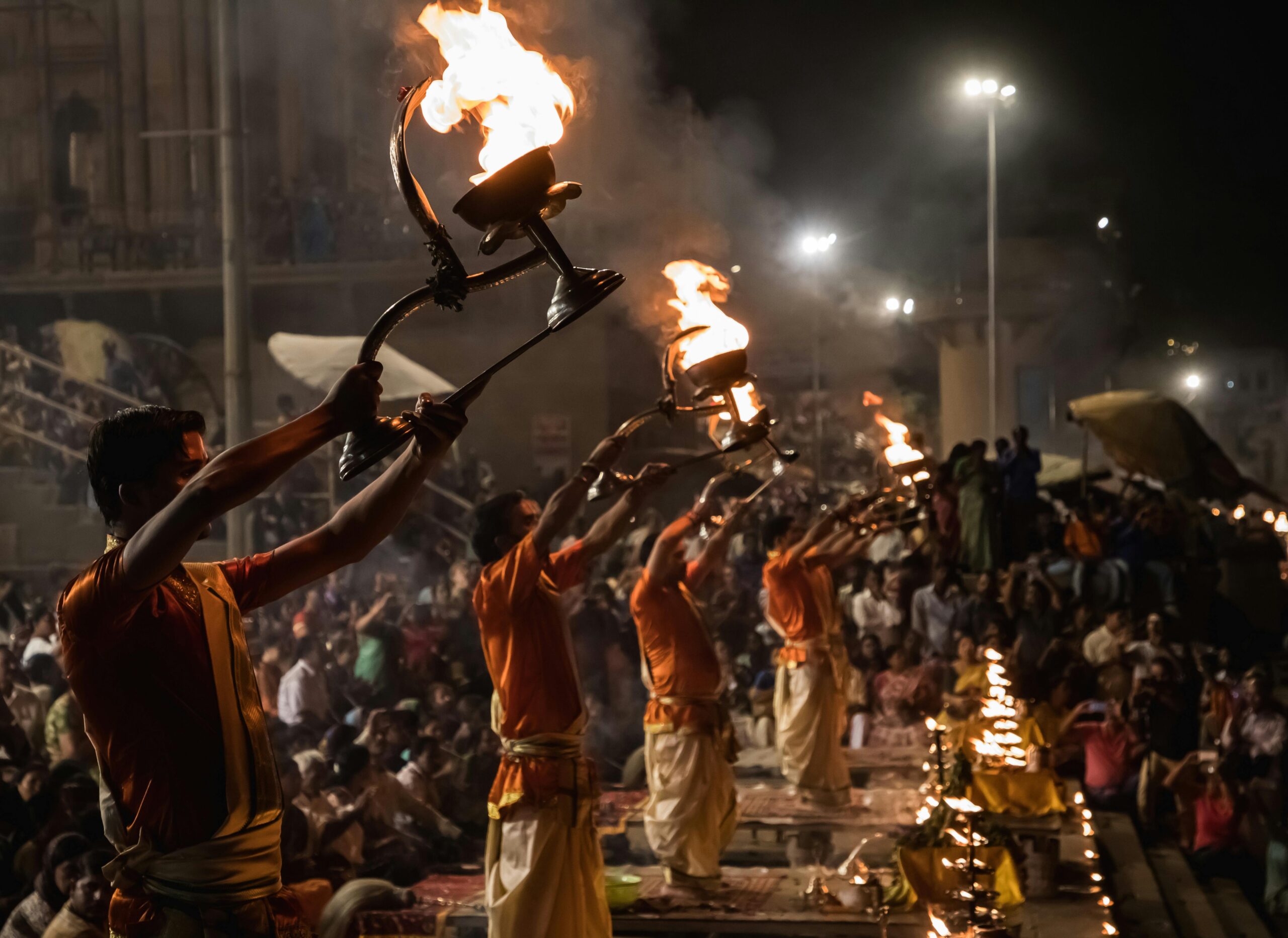
14 Best Amazing Places to Explore in Varanasi
You can witness Indian spirituality at its most vibrant in the top sites to visit in Varanasi. See Hindu worshipers purging themselves of their sins in the Ganges River every morning at the Banaras ghats, and then return for sundown prayer ceremonies powered by fire.
At the famous Hindu cremation site of Manikarnika Ghat, you can witness funeral pyres blazing continuously. Are you feeling motivated? Obtain it from vendors along the ghats, and you can strengthen your bond with this aspect of Indian culture by releasing your own floating offering.
Varanasi is not just a spiritual hub but also a vibrant artistic community. See an amazing collection of tiny paintings at the Banaras Hindu University Museum or try making your own in a hands-on session at Ruchika Art Gallery. Head over to Vishnu Tea Emporium for the greatest Indian chai (and tea mementos to take home) when you need a pick-me-up.
With our list of the top Varanasi tourist attractions, you may learn more about this historic city.
Best Places To Visit in Varanasi:
Below are the places to explore:
1. Ganga River:
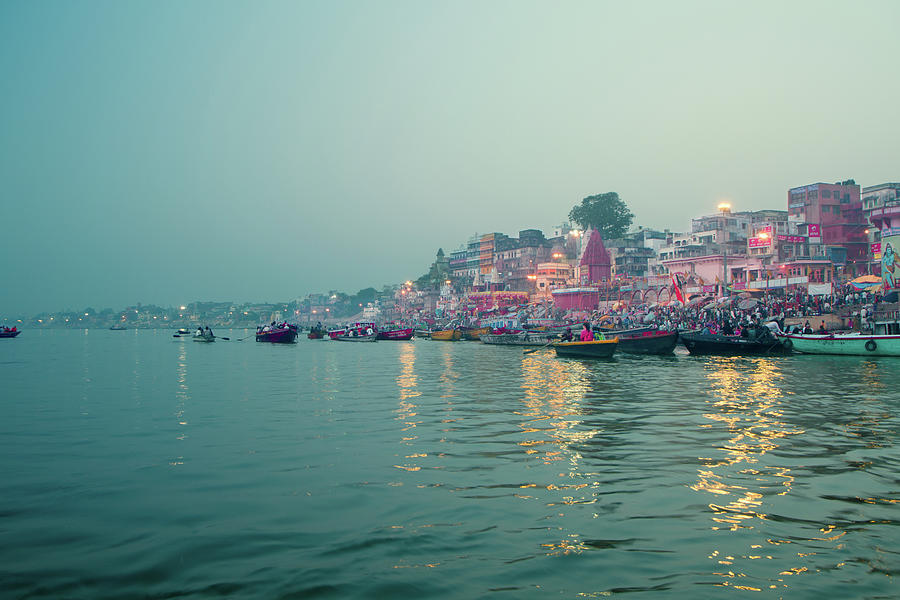
One of India’s most venerated natural landmarks, the Ganges River bears the name of the Hindu goddess Ganga. The river flows southeast to the Bay of Bengal from the northern Himalayas. Every day, 400 million to 600 million people depend on the Ganges River for their drinking and bathing needs.
Hindus come to Varanasi from all over the world to perform rituals along the many ghats along the Ganges River and to bathe in the holy water. As the Ganges provides a permanent point of guidance for visitors traversing the labyrinthine city, you’ll spend a lot of time touring and enjoying the vistas along the river.
Try catching a sunrise boat ride on the river by getting up early and haggling with one of the many boatmen that congregate along the ghats.
One of the best things to do in Varanasi in the afternoon or early evening is to buy a little floating offering, fill it with fresh flowers and a candle, and release it into the Ganges River. You will have a deeper connection to Hindu culture and remember the delightful experience for years to come.
2. Dasaswamedh Ghat:
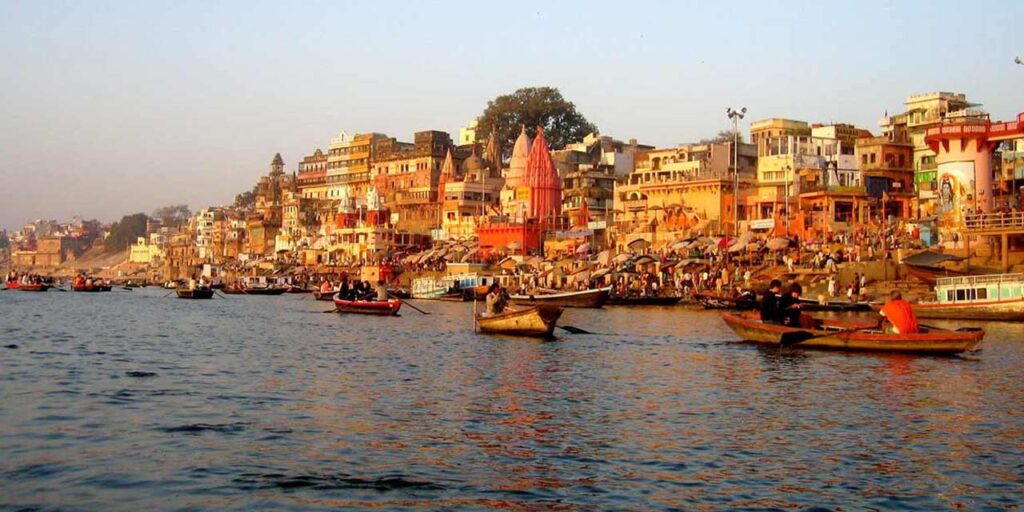
One of the greatest spots to visit in Varanasi is the Dasaswamedh Ghat because of its vibrant ambiance. This tourist destination is a tumbling mix-match of flower vendors offering vibrant flowers, Ganges River boat operators offering rides, and face-painting sadhus (holy men). During the day, you might spend hours people watching in this neighborhood.
At around 7 p.m. every night, Hindu priests perform the Ganga Aarti at the Dasaswamedh Ghat. The spiritual ceremony commences when the priests, dressed in saffron-colored robes, lay out platters containing flower petals and other offerings and blow conch shells.
For almost forty-five minutes, thousands of tourists assemble to witness the priests perform elaborate rituals while waving stacked platters of incense scented with sandalwood. It’s one of the best things to do in this place and an impressive sight.
Hot tip: If you want to beat the crowds and secure a prime location for the spectacle, arrive at the ghat at least a few hours early. Amazing views also be seen from shop balconies above the ghat or from boats along the river.
Also Read: Amazing Places to Visit In India
3. Assi Ghat,Varanasi:
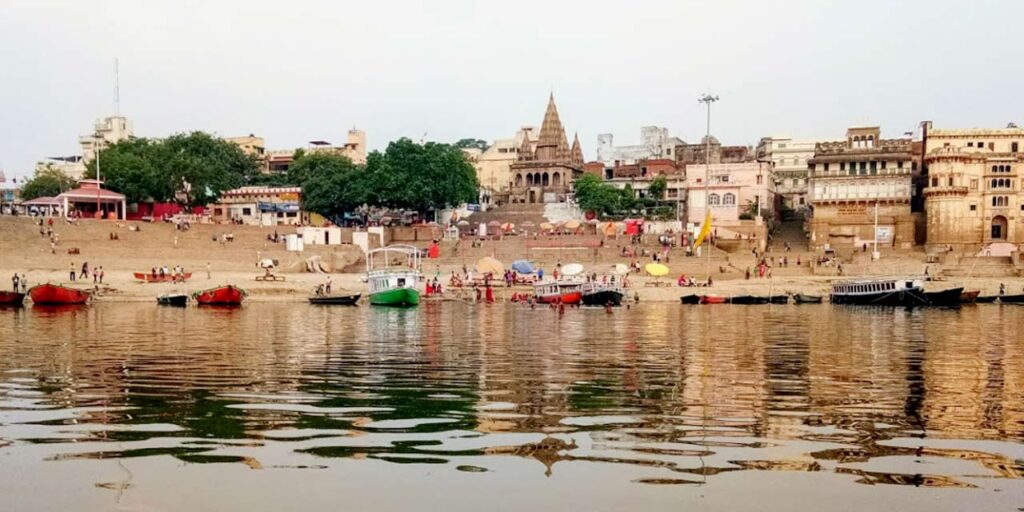
The southernmost principal ghat in Varanasi is always at the top of the list of popular tourist destinations. The main draw of Assi Ghat is a Shiva lingam, which is a phallic image of the Hindu god, hidden under a revered fig tree. Every day, hundreds of pilgrims flock there to worship Lord Shiva following their Ganges River bath.
Are you a little stiff from your trip? Visit Assi Ghat at dawn, when you can practice downward-facing dog among hundreds of other people during complimentary yoga sessions every morning that feature live music. In the evening, visitors can witness another Ganga Aarti performance here, which is a little more private and smaller than the one at Dasaswamedh Ghat.
4. Manikarnika Ghat,Varanasi:
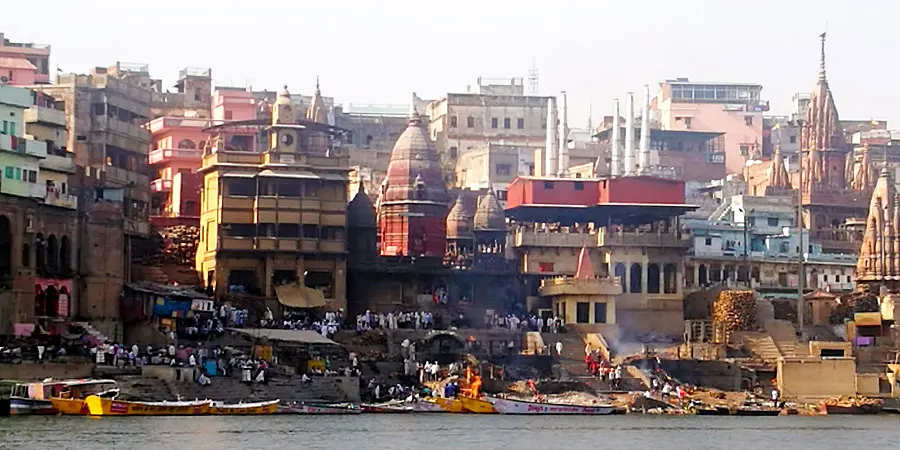
At Manikarnika Ghat, plumes of smoke spiral up toward the sky. No, it comes from the constant cremations that take place on this ghat, not from a factory. Manikarnika Ghat is considered by Hindus to be among the most fortunate locations for the dead to attain moksha, or freedom from the cycle of reincarnation. At this ghat, the flame that feeds the funeral pyre is thought to have been lit for centuries. The pyre burns continuously. At this location, about 100 cremations occur each day.
Many priests or guides volunteer to take visitors on a tour of the intriguing ghat, though some can be pushy when it comes to asking for money. Along with stacks of firewood preparing to feed the bonfire, you might observe doms (members of an untouchable caste) bringing cloth-wrapped bodies on homemade stretchers.
For a cost, of course, you might also be given the opportunity to witness a cremation up close. Despite its profundity, the experience is not for the faint of heart, nor is it a conventional tourist attraction. Be courteous, aware of your boundaries, and refrain from taking pictures of the deceased, the mourners, or the funerals.
Hot tip: Take a boat excursion along the Ganges River and stop by Manikarnika Ghat if you’re intrigued by the traditional cremations but can’t bear the thought of witnessing them up close. While providing travelers with a sense of what’s happening in this significant location, the distance lessens the impact.
5. Dhamek Stupa, Varanasi:
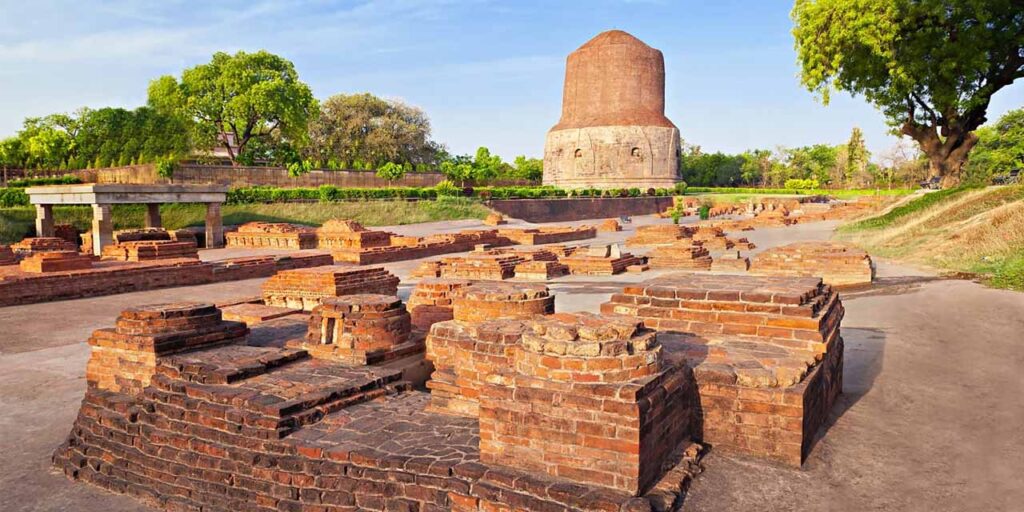
Varanasi is undoubtedly a Hindu city, yet the town of Sarnath, less than 12 kilometers away, is a prominent Buddhist center. This is the location of the enormous Dhamek Stupa, a 28-meter-diameter, 43.6-meter-tall edifice made of brick and stone. The 249 BCE edifice that the stupa replaced was constructed more than 1,500 years ago.
The pious hold that after achieving enlightenment, the Buddha gave his first sermon at Dhamek Stupa, during which he revealed the Eightfold Path. As you explore the site, notice the exquisite carvings of people, flowers, and birds that decorate the stupa’s walls.
In addition, Sarnath has a plethora of additional tourist attractions, making it a wonderful day excursion from Varanasi. See the Buddhist shrine Chaukhandi Stupa, which is believed to have existed since the sixth century, and then proceed to the Sarnath Museum to view the sculpture known as the Lion Capital of Ashoka. Originally erected atop the Ashoka Pillar in 250 BCE, this artwork was adopted as the National Emblem of India in 1950.
After seeing the serene Tibetan Temple, which is close to the main market, you should return to Varanasi to cap off the day.
6. Shri Kashi Vishwanath Temple:
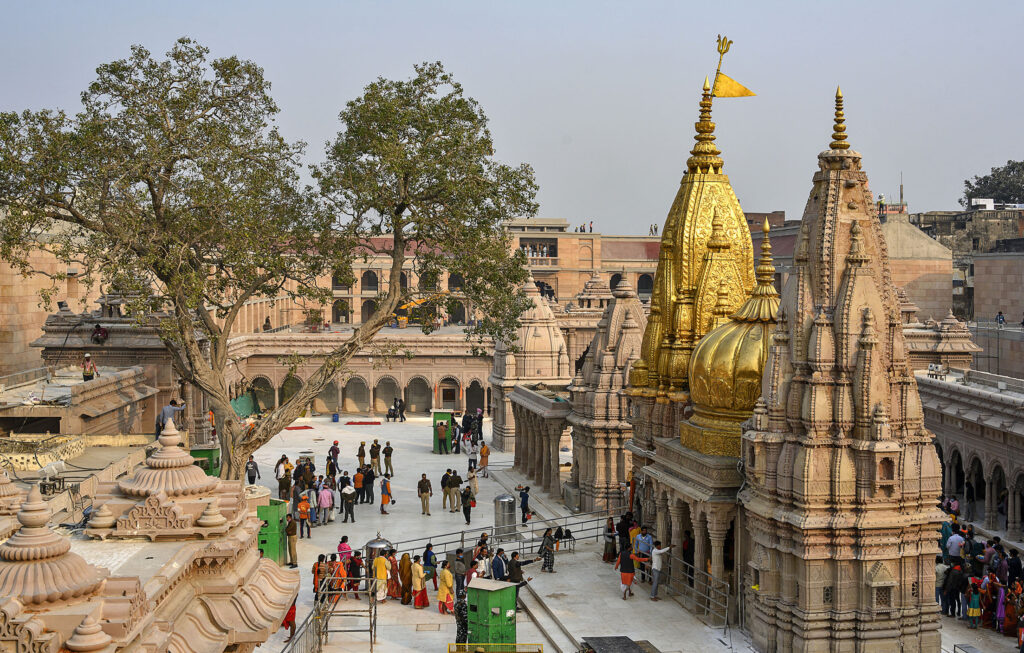
Thousands of miles separate Hindu pilgrims and tourists from the holy site of the Shri Kashi Vishwanath Temple. Located four kilometers from the Varanasi Junction train station, which is close to the Manikarnika Ghat.
The magnificent building, which honors the Hindu god Shiva, known as “The Golden Temple” because of its eye-catching spire. which covered in about 800 kg of pure gold. Hundreds of other temples around India have taken inspiration from this temple’s unique style for their architectural layout.
Tourists required to store their phones, cameras, bags. And other things in a nearby locker due to strict security measures surrounding the facility. At the Darshan Booking Desk, foreigners must also have their passports and visas validated. Anticipate to kick off your shoes and join hundreds of other tourists in a line. That will stretch out to touch the 60-centimeter-tall, sin-forgiving Shiva lingam in a silver alter. It’s a demanding yet worthwhile experience.
Hot tip: Avoid this place during Hindu festivals since long lines of people waiting to enter the temple might stretch up to two full days.
7. Banaras Hindu University:
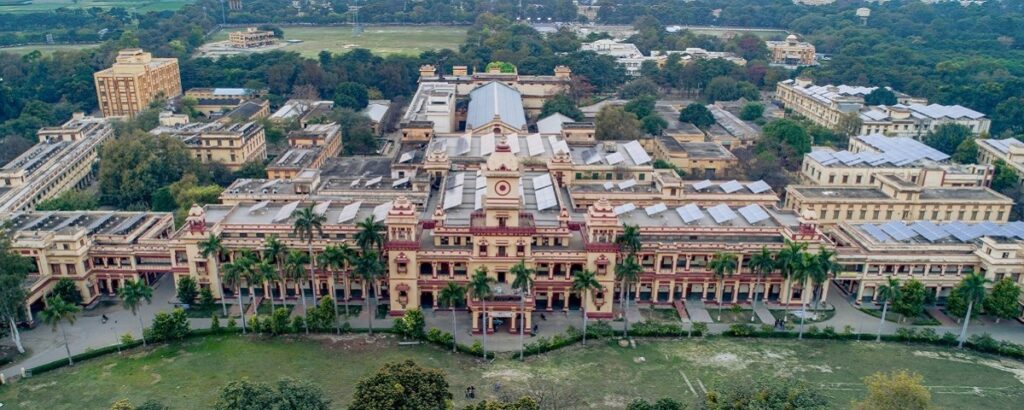
Since its founding in 1916, Banaras Hindu University has played a significant role in shaping Varanasi’s identity. With over 25,000 students, the esteemed public university is among the biggest residential universities in Asia.
This verdant 1,300-acre campus is the perfect place to get away from the throng and bustling metropolis of Varanasi, as there are no hill stations in the vicinity. The calm location provides a breath of fresh air from the busy atmosphere at the Banaras Ghats, shaded by hundreds of tall trees.
Visit the New Vishwanath Temple while you’re on campus. It’s a well-known temple whose decades-long development ultimately completed in 1966. One of the tallest temples in India, standing at 77 meters, the structure takes its architectural cues from the nearby Shri Kashi Vishwanath Temple.
It’s also important for guests to the university to check out Bharat Kala Bhavan, the on-campus museum. The cultural institution houses over 100,000 objects of artistic and archaeological significance in addition to a remarkable collection of miniature paintings.
8. Ruchika Art Gallery, Varanasi:

Do you wish to bring a little bit of Varanasi with you? The Ruchika Art Gallery, located off Ravindrapuri Road, is the only place to look. Ruchika Mehrotra, the gallery’s namesake, has designed a cozy, fun space to showcase a colorful array of paintings. That encapsulate the spirit of Varanasi and the ghats in a rainbow of hues.
Although some of the larger pieces need to be shipped, most of the paintings compact enough to carried as mementos in a luggage. Moreover, there are adorable postcards for sale.
Apart from exhibiting artistic creations created by local artists. Ruchika Art Gallery extends an invitation to visitors to participate in painting sessions. To find out what’s scheduled during your vacation to Varanasi, get in contact with Ruchika.
9. Shri Durga Temple:
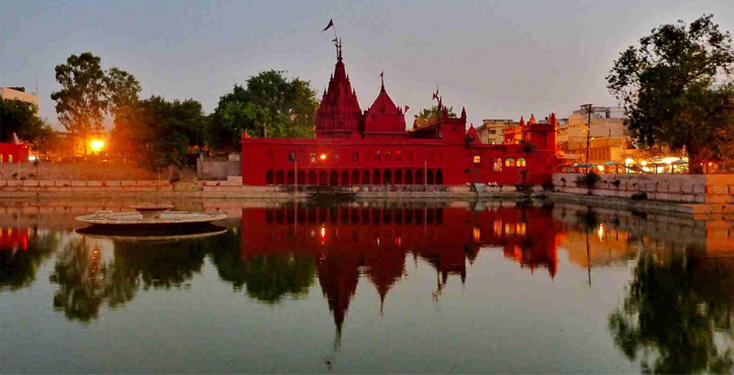
There’s more to spiritual life in Varanasi than just the ghats. Hindus who want to honor the goddess Durga often visit the Shri Durga Temple. Which is located within five minutes’ walk west of Assi Ghat. The 300-year-old temple is hard to overlook because it is completely covered in bright red paint.
The moniker “Monkey Temple,” given to the temple, provides you with an idea of the kinds of animals you may encounter swinging around here. A few elegant swans may also be visible to you as they float on the water feature outside the temple.
10. Ramnagar Fort, Varanasi:
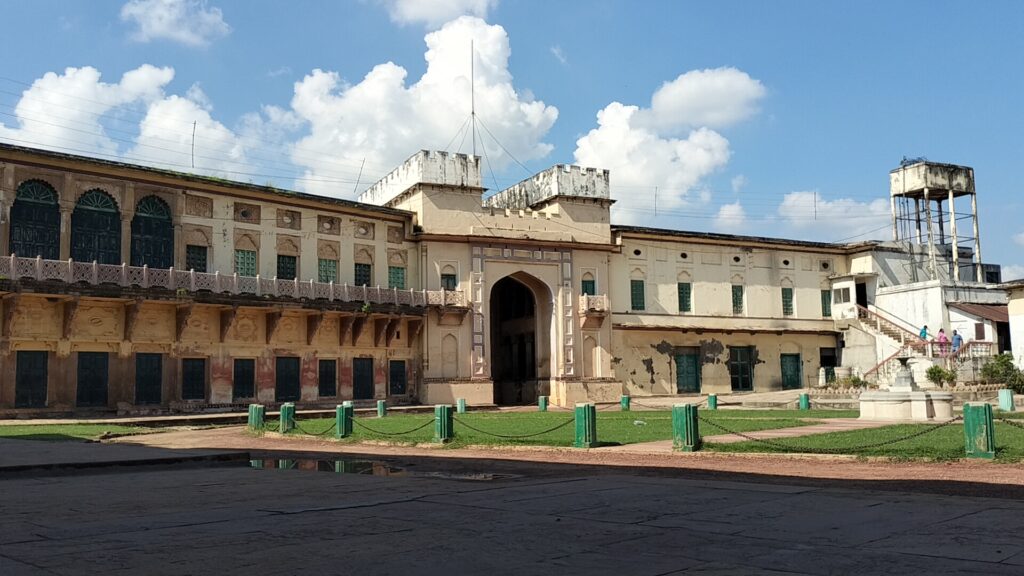
Varanasi is only one of many Indian destinations that have forts. Ramnagar Fort is located about 14 kilometers out from the city core.
No longer needed as a military fortress, the sandstone fort and palace from the eighteenth century now serves as a bizarre museum filled with antique weapons, vintage cars, ornate hookahs, jewel-encrusted sedan chairs, and a unique astronomical clock that is over 150 years old.
Check visits the temples of the fort, one of which honors Veda Vyasa. The author of the Mahabharata and other significant Hindu epics, after participating in an archaeological treasure hunt at the museum.
11. Darbhanga Ghat:
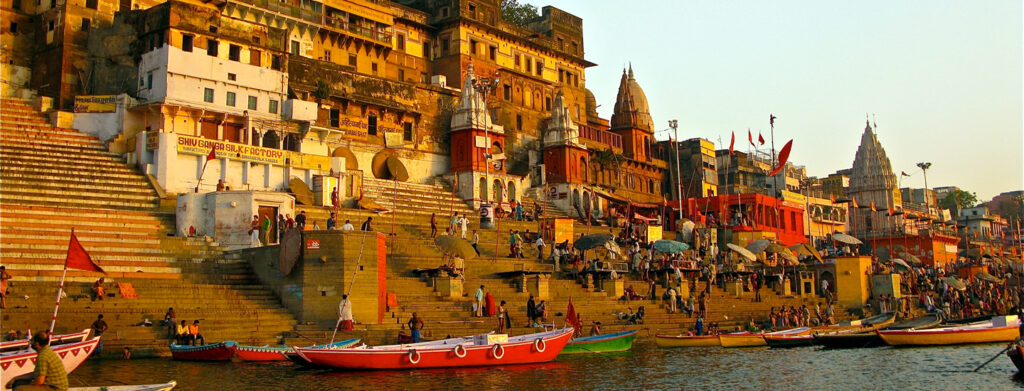
Photographers, this is your alert: Darbhanga Ghat provides the best view of Varanasi for breathtaking photos. Topped off by the ultra-luxurious BrijRama Palace, a historic fort turned heritage hotel, are the stairs that descend to the riverbed. Greek columns and curving balconies lend an air of royalty to the space and your photos.
To gain unhindered views of the magnificent sunrise over the Ganges River’s horizon, arrive here about dawn.
12. Shivala Ghat, Varanasi:
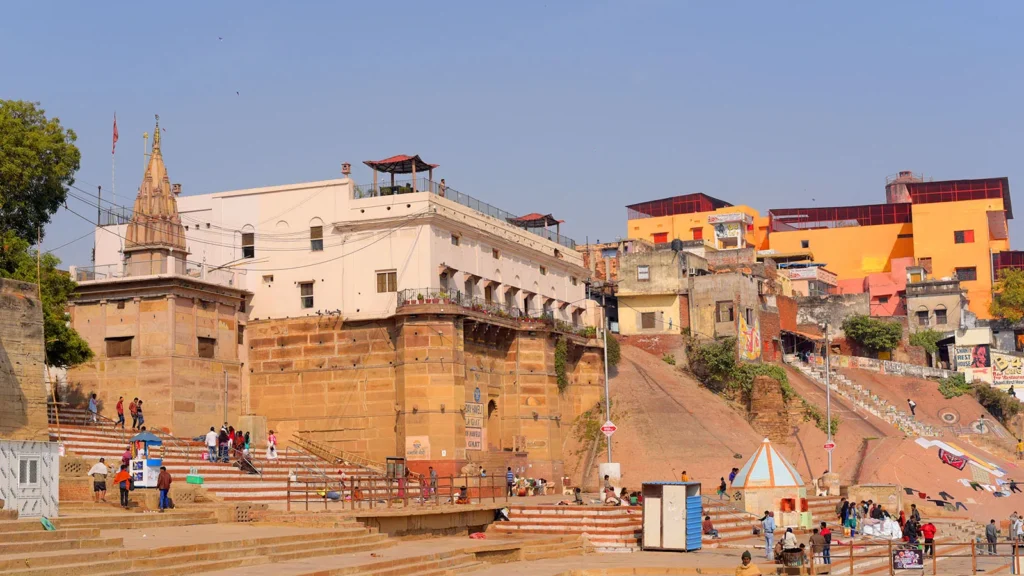
If you’re looking for some peace and quiet along the Ganges, Shivala Ghat is a nice site to visit, albeit it’s not as busy as other riverfront spots in Varanasi.
It’s easier to watch the pious taking their daily plunge in the sacred river and the families getting together for tea and prayers in the morning when there aren’t as many people at the ghat. It is not uncommon to share the region with water buffalo, as they are known to congregate in the vicinity. A palace constructed in the 19th century by Sanjay Vikram Shah, the monarch of Nepal, is also visible.
Spending a few hours exploring the labyrinthine passages that lead to Shivala Ghat is equally worthwhile. This crowded neighborhood gives an idea of what Varanasi residents go through daily.
13. Sankat Mochan Hanuman Temple:
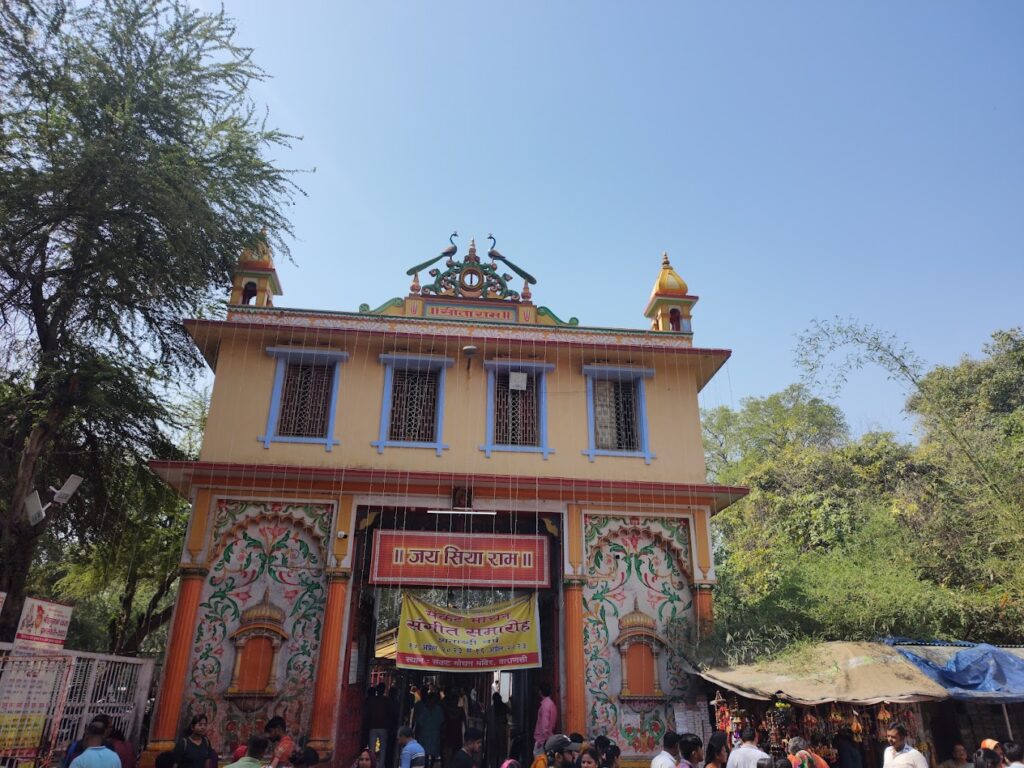
Every day, thousands of people flock to the Sankat Mochan Hanuman Temple. Situated on the banks of the Assi River, ready to present flowers and candies to the Hindu deity Hanuman.
According to legend, the monkey deity appeared to Hindu saint and poet Goswami Tulsidas precisely where this temple now stands. When we talk about monkeys, don’t forget to look out for the cheeky animals that frequently seen running around the temple.
Hot tip: If you want to visit this Varanasi attraction, April or May can be really wonderful. At that time, the temple organizes its yearly “Sankat Mochan Sangeet Samaroh,” a five- to six-day festival with classical music and dance performances. Performers participate in the nearly century-old event from all around the world.
13. Vishnu tea Emporium,Varanasi:
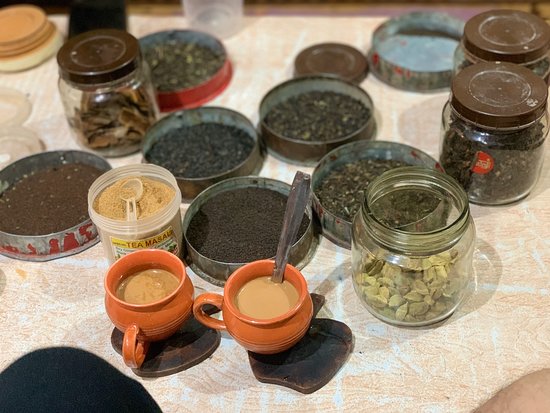
In India, tea is literally a way of life; you’re never more than a few feet away from a roadside stall where chaiwalas (tea sellers) are brewing up spicy, creamy masala chai.
Visit the Vishnu Tea Emporium to delve more into this culinary custom. This laidback establishment, which is only four minutes’ walk from Dasaswamedh Ghat. Provides close-up demonstrations of how to create masala chai using fresh ingredients and spices.
To help guests replicate the traditional Indian beverage at home. It also provides a carefully chosen assortment of delectable tea and spice blends. You’re under no need to buy, but this is one memento you won’t regret purchasing.
For more information, Click here.
Visit our official website Travel India Info, to plan your upcoming trip or mail us at info@travelindiainfo.com. We are happy to assist you. Happy Travelling!!
Recent Posts
Europe Travel Guide: Best Places to Visit & Explore
15 Best Amazing Places to Explore in Scotland
9 Best Amazing Day Trip To Explore from Kyoto


